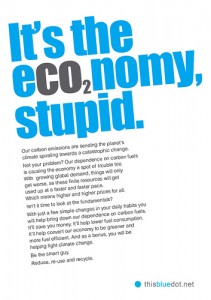This is the second lesson of Economics 101. This post will discuss monetary policy theory.
It’s not necessary to know the ins and outs of the economy. The goal of Economics 101, is to give you a basic understanding of how the U.S. economy operates. This way, next time you hear a report or someone talking about the economy, you understand what’s being said and can even join in on the conversation.
This page will be discussing monetary policy theory. Most importantly, the difference between expansionary monetary policy and contractionary monetary policy.
What Is Monetary Policy?
Monetary policy theory is the policies implemented by the Federal Reserve to control the money supply and the cost to buy money (interest rates).
The Federal Reserve, the unit making the decisions, is often referred to as “The Fed.” The Fed is part U.S. Government run and also privately run.
The current structure consists of two parts:
- A 7 Member board of directors located in Washington D.C… Each member is appointed by the President, with confirmation from the Senate for a term of 14 years. Currently, Ben Bernanke, whose name you will hear a lot, is the current president of this board.
- 12 Reserve Banks located throughout the U.S.
What Does the Federal Reserve Do?
The Federal Reserve has three primary goals to their actions:
- Maintain long term economic growth
- Maintain price levels, (inflation)
- Maintain full employment
As I wrote about previously, the economy is cyclical. Generally, The Fed, who has a degree of control of the economy, is attempting to “ease or expand” or “tighten or contract” the economy. Whenever you hear the word ease, The Fed is implementing policies to increase money supply and decrease the cost of borrowing. These acts are The Fed’s attempt to stimulate the economy.
The Fed isn’t attempting to stimulate the economy at all times. Constant stimulation to the economy would cause excess inflation, which is bad for long term economic growth. Therefore, there are times when The Fed is attempting to tighten the economy by decreasing money supply and increasing interest rates.
The Three Tools of The Federal Reserve
To control money supply and the cost of borrowing money, the Federal Reserve has three tools:
- Reserve Requirement - This is the percentage of deposits banks must maintain in cash. By increasing the reserve requirement, the Federal Reserve is trying to decrease the money supply and increase interest rates. Therefore, there’s less cash available in the economy, which will tighten it. On the other hand, if the Fed decreases the amount banks must hold, there’s more money available and interest rates will decrease. This will stimulate the economy.
- Discount Rate – The discount rate is the rate at which banks can borrow from The Fed. As The Fed increases the discount rate, interest rates rise. As the discount rate is decreased, interest rates will lower.
- Open Market Operations – The last tool at The Fed’s disposal is the ability to buy and sell government securities. For example, the Fed wanted to ease the economy, they would buy government securities. The purchasing of government securities would put cash into the economy. Increasing the money supply and stimulating the economy.
Closing
Now that you understand the basics of monetary policy theory, listen when you hear anything about “The Fed”. Decipher, if The Fed is using expansionary monetary policy or contractionary monetary policy.

Comments on this entry are closed.